
This isn’t where the system ends either. Far from it. Alongside being able to block attacks, you can also try to dodge them, although a successful dodge is more about distancing yourself appropriately rather than simple timing (for example, backing away from a Viking with a long spear will always result in you being skewered, no matter how well you time it). Furthermore, if you’re facing an opponent who is overly reliant on blocking, there’s a move designed to break straight through their guard, leaving them temporarily stunned. From here you can either attack them, or throw them into a wall or off a ledge.
What results is a complex, open-ended, and yet surprisingly intuitive system of moves and counters. You can never be sure what your opponent’s next move will be, but provided you’re attentive, you can always do something about it. It’s important to stress that this is not a tactical game. You may enter a fight with some idea of how you will approach it, but once blades clash, it’s all about reaction, the moment-to-moment intensity of feeling out a hole in your opponent’s defences while simultaneously patching up your own.
Indeed, For Honor’s combat isn’t just cleverly designed, it’s thrillingly executed. Fights are slick and seamless, sparks fly and steel rings every time blades connect, and each true blow lands with a sickening crack that sends your opponent reeling. My only real complaint about the combat’s presentation is that the swords seem to act like heavy metal sticks which you beat an enemy with, rather than the light and lethally sharp weapons that they actually are.
All of this is perfectly suited to a duelling game, and unsurprisingly it’s in the multiplayer’s Duel mode where For Honor shines best, allowing both players to focus on the detail of each fight uninterrupted. Elsewhere, the game struggles to make the most of the beautiful combat system its developers have devised. Other multiplayer modes include straightforward deathmatch, which has all the chaos but none of the fun of Chivalry: Medieval Warfare, and Brawl, which is Duel with two other players, thus rendering everything that is good about Duel redundant.
Then there’s Dominion, For Honor’s flagship mode that blends an area-control structure with large groups of AI soldiers to create epic battles of attrition. Dominion successfully conveys the madness inherent to medieval battles, with soldiers being cut down left, right, and centre often as much due to luck as to rank. It’s worth noting that For Honor does take pains to discourage players from ganging up on one opponents. You only need to guard in the rough direction of a second player to block all of their attacks, and if you take enough hits, you can trigger Revenge mode where you gain a massive health and stats boost to go Berserk on your aggressors. Sadly, the nuances of the combat system are still lost in Dominion’s chaotic crush. In fact, the mode as a whole lacks structure and would benefit from each time working through a more ordered sequence of objectives.
The single-player, meanwhile, fares better in terms of eking out some variety from the systems, but suffers from a lack of direction. It tells the story of the Blackstone Legion and their plague-like spread across the lands of KnightsVikingsAndSamurai (I can’t remember the actual name of For Honor’s fantasy world). Despite some lavish cut-scenes, it essentially serves as a six-hour tutorial for the multiplayer. Not only does it flit between factions, it also has you play several different roles per faction. Consequently, there’s little opportunity for character development, so the story rushes from one location to another without ever finding its feet. Even so, there are a few nicely conceived missions, such as one that involves you guarding a battering ram while it’s moved toward an enemy’s castle gate, and a Viking raid on a Samurai port-city that includes a thrilling beach-assault.
My biggest gripe with For Honor, however, is how there’s so much clutter gunging up its works. At any given moment, the screen is littered with icons, objective markers, notifications, highlighted objects, and so on. Finding a match in the multiplayer involves tracking through screen upon screen upon screen of lobbies and unlocks and character selection. The 'persistent war', which reflects how players have performed for their various factions, has to update each time you load the game, thus further delaying your arrival into multiplayer.
It all makes me want to step into the screen and do some tidying up, because For Honor doesn’t need any of this frippery. It doesn’t need unlocks, or a deathmatch mode, or even a single-player. What it needs to do is get me into a duel as quickly and efficiently as possible, and work on making that mode the best it can be, because For Honor’s core fighting system deserves it. Even as it stands, I thoroughly recommend giving For Honor’s duels a try. Just be prepared to wade through a fair amount of mud as you seek out your opponents on the battlefield.
What results is a complex, open-ended, and yet surprisingly intuitive system of moves and counters. You can never be sure what your opponent’s next move will be, but provided you’re attentive, you can always do something about it. It’s important to stress that this is not a tactical game. You may enter a fight with some idea of how you will approach it, but once blades clash, it’s all about reaction, the moment-to-moment intensity of feeling out a hole in your opponent’s defences while simultaneously patching up your own.
Indeed, For Honor’s combat isn’t just cleverly designed, it’s thrillingly executed. Fights are slick and seamless, sparks fly and steel rings every time blades connect, and each true blow lands with a sickening crack that sends your opponent reeling. My only real complaint about the combat’s presentation is that the swords seem to act like heavy metal sticks which you beat an enemy with, rather than the light and lethally sharp weapons that they actually are.
All of this is perfectly suited to a duelling game, and unsurprisingly it’s in the multiplayer’s Duel mode where For Honor shines best, allowing both players to focus on the detail of each fight uninterrupted. Elsewhere, the game struggles to make the most of the beautiful combat system its developers have devised. Other multiplayer modes include straightforward deathmatch, which has all the chaos but none of the fun of Chivalry: Medieval Warfare, and Brawl, which is Duel with two other players, thus rendering everything that is good about Duel redundant.
Then there’s Dominion, For Honor’s flagship mode that blends an area-control structure with large groups of AI soldiers to create epic battles of attrition. Dominion successfully conveys the madness inherent to medieval battles, with soldiers being cut down left, right, and centre often as much due to luck as to rank. It’s worth noting that For Honor does take pains to discourage players from ganging up on one opponents. You only need to guard in the rough direction of a second player to block all of their attacks, and if you take enough hits, you can trigger Revenge mode where you gain a massive health and stats boost to go Berserk on your aggressors. Sadly, the nuances of the combat system are still lost in Dominion’s chaotic crush. In fact, the mode as a whole lacks structure and would benefit from each time working through a more ordered sequence of objectives.
The single-player, meanwhile, fares better in terms of eking out some variety from the systems, but suffers from a lack of direction. It tells the story of the Blackstone Legion and their plague-like spread across the lands of KnightsVikingsAndSamurai (I can’t remember the actual name of For Honor’s fantasy world). Despite some lavish cut-scenes, it essentially serves as a six-hour tutorial for the multiplayer. Not only does it flit between factions, it also has you play several different roles per faction. Consequently, there’s little opportunity for character development, so the story rushes from one location to another without ever finding its feet. Even so, there are a few nicely conceived missions, such as one that involves you guarding a battering ram while it’s moved toward an enemy’s castle gate, and a Viking raid on a Samurai port-city that includes a thrilling beach-assault.
My biggest gripe with For Honor, however, is how there’s so much clutter gunging up its works. At any given moment, the screen is littered with icons, objective markers, notifications, highlighted objects, and so on. Finding a match in the multiplayer involves tracking through screen upon screen upon screen of lobbies and unlocks and character selection. The 'persistent war', which reflects how players have performed for their various factions, has to update each time you load the game, thus further delaying your arrival into multiplayer.
It all makes me want to step into the screen and do some tidying up, because For Honor doesn’t need any of this frippery. It doesn’t need unlocks, or a deathmatch mode, or even a single-player. What it needs to do is get me into a duel as quickly and efficiently as possible, and work on making that mode the best it can be, because For Honor’s core fighting system deserves it. Even as it stands, I thoroughly recommend giving For Honor’s duels a try. Just be prepared to wade through a fair amount of mud as you seek out your opponents on the battlefield.


MSI MPG Velox 100R Chassis Review
October 14 2021 | 15:04

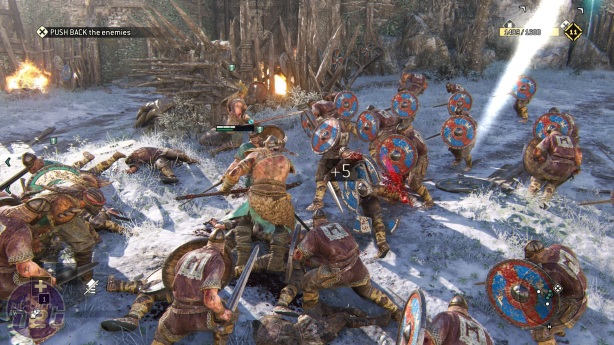

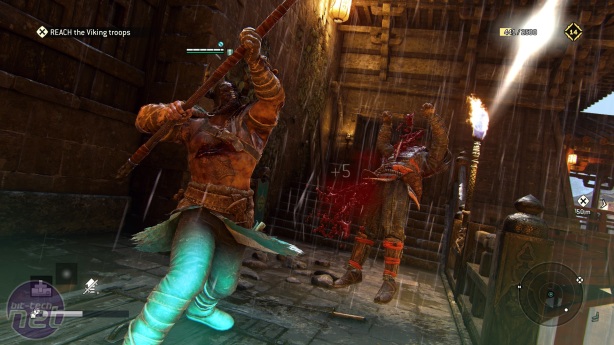
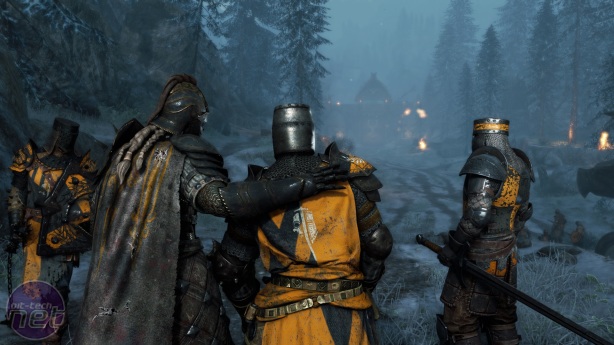
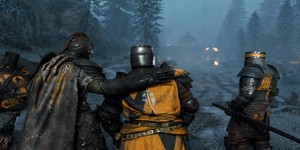
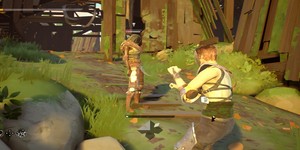






Want to comment? Please log in.